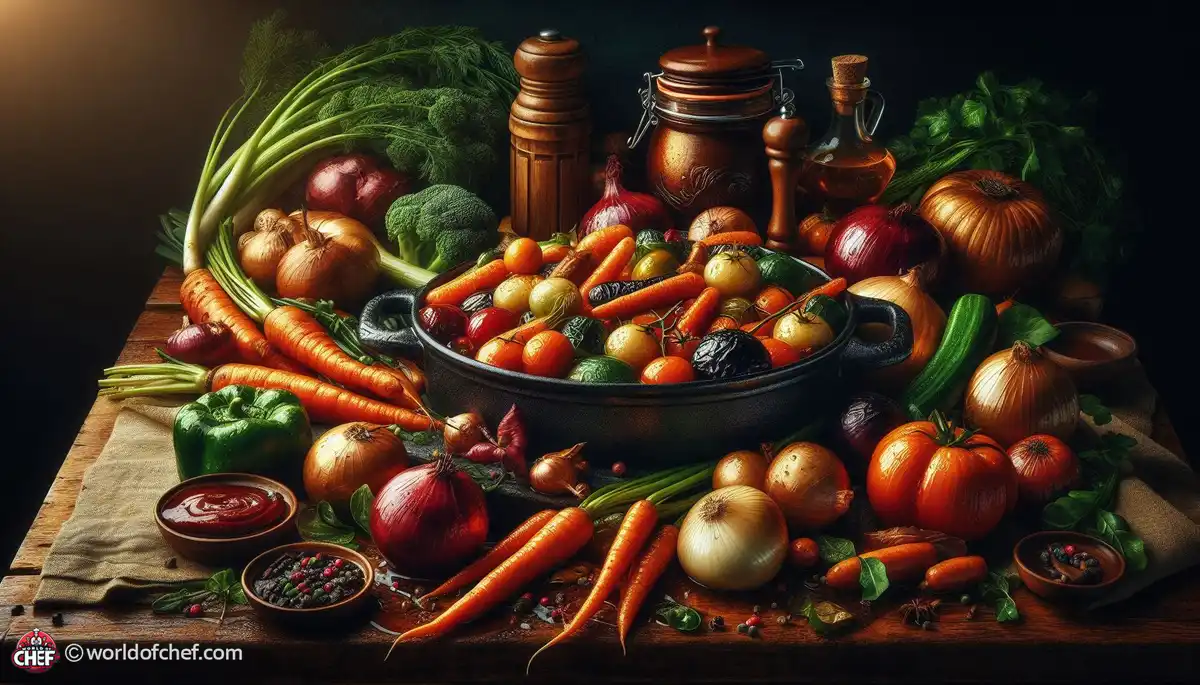
Simmering with Spices: Infusing Flavor into Your Dishes
Emery Donley - Oct 8, 2024 - 8 min read


Braising vegetables is one of the culinary techniques that can enhance the flavors and textures of vegetables. Many people think that braising is only a process meant for meat. However, vegetables can benefit much from this slow-cooking process. This all-inclusive guide explores the art of braising vegetables and how it can change the taste and texture of your dishes.
Braising is the technique of browning food in fat and then cooking at a low temperature in a covered pot in liquid. Gentle cooking does that way with flavors melding together as well as tenderizes vegetables and makes them juicy. The technique of braising is achieved through a perfect combination of vegetables selected and the choice of the correct liquid in which the cooking is to be done along with the cooking time.
Not all vegetables are the same in braising. Sturdy vegetables like carrots, potatoes, and Brussels sprouts are suitable for braising. Leafy Greens and summer squash are not great for braising because they are too delicate. When you are picking the vegetables to braise, pick those ones that will stand the long cooking time without turning mushy.
Brown the vegetables in fat to add depth of flavor - for example, browning them in oil or butter over medium-high heat enhances the exterior with a flavor of caramelization that has a big impact on a dish. To get just the right sear you need to have the pan hot and not overcrowd the pan, which only leads to steaming when trying to brown.
Aromatics: Using onions, garlic, and herbs are essential steps when braising vegetables full of layers of flavors. Fragrant add-ins contribute not only to the depth of a dish but aromatic goodness that can make you drool in your mouth. Feel free to blend different aromatics to obtain a flavorful variation you adore.
Seasonings are the other important ingredients for braising vegetables since they will give a boost to the original flavors and also neutralize bitterness or acidity. The most common seasonings for braising are salt, pepper, and spices such as paprika, cumin, and thyme. Use them sparingly, though, as it is easy to overpower the subtle flavors of the vegetables.
The choice of the cooking liquid makes a difference to the final product of braised vegetables. You could use water, but of course, it lacks the flavor that broth, wine, or tomato sauce offer. These flavorful liquids, aside from giving depth and richness to the dish, help tenderize the vegetables as they simmer. You can experiment with different types of cooking liquids and unique Flavor Combinations that would satisfy your palate.
Cooking vegetables in a braising method requires that the correct temperature is maintained in order for the vegetables to cook uniformly and retain their texture. Braising should be carried out at low temperatures since this will enable the vegetables to cook slowly and without becoming mushy. Never boil the vegetables at very high temperatures, as they break down quickly and lose their shape.
The amount of time it takes to cook braised vegetables is likely to depend on their size and density, as well as the cooking liquid used. The vegetables are checked to monitor the status of their cooking and cooking time is usually adjusted upwards or downwards, depending upon the outcome of the tests. In reality, good braised vegetables should leave a bit to be bitten yet still feel like they are softly tender. Thus, they end up perfectly cooked.
Let braised vegetables cool a little to let flavors combine. Resting also facilitates the absorption of excess liquid, hence more flavorful. Serve braised vegetables hot either as an individual side dish or be generous when accompanying it with your preferred proteins.
Braising vegetables is a versatile cooking method that can transform simple ingredients into extraordinary dishes. Knowledge of the basics of braising and experimentation with other flavor combinations will unlock a world of culinary possibilities, resulting in dishes sure to impress. Next time you want to take it up a notch on vegetables, try braising, and you'll have nothing but an unforgettable dining experience.

Emery Donley - Oct 8, 2024 - 8 min read

Russell Comeaux - Oct 8, 2024 - 8 min read

Walter Backus - Oct 7, 2024 - 8 min read

Samantha Thames - Oct 7, 2024 - 6 min read